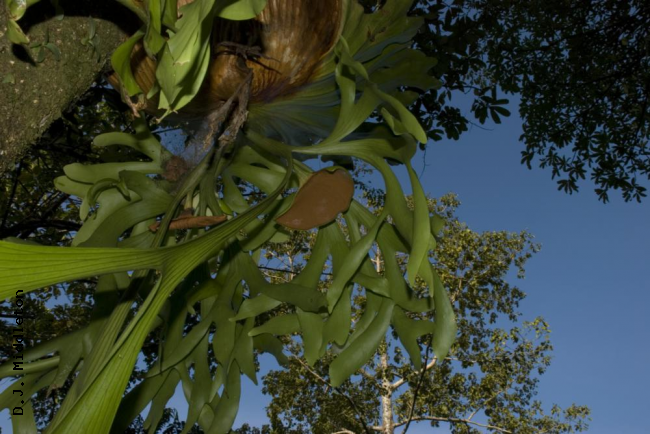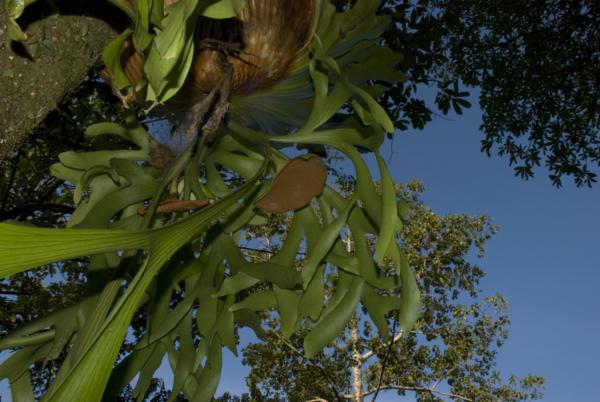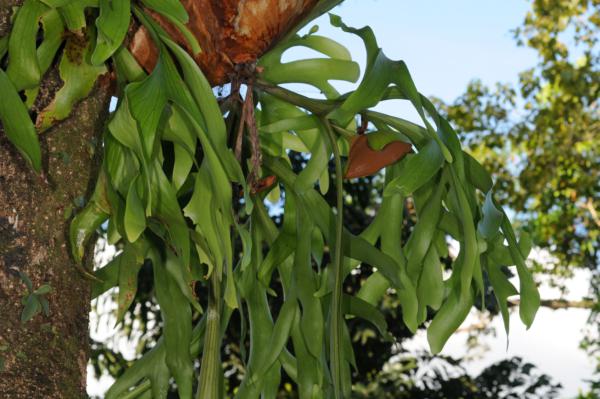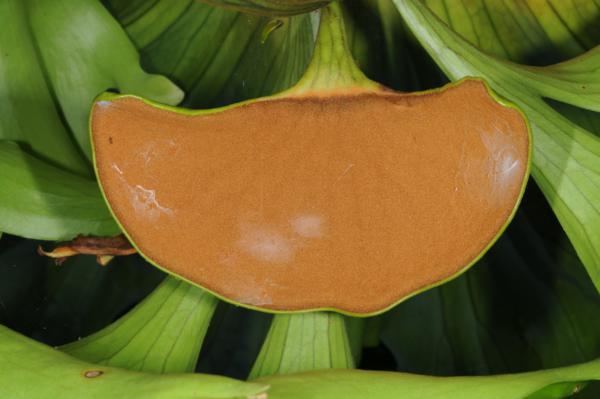
Platycerium coronarium (J.Koenig ex O.F.Müll.) Desv.
Family
Polypodiaceae
Nomenclature
Platycerium coronarium (J.Koenig ex O.F.Müll.) Desv., Prodr.: 213. 1827; C.Chr., Bot. Tidsskr. 32: 349. 1916; Tardieu & C.Chr., Fl. Indo-Chine 7(2): 445. 1941; Holttum, Rev. Fl. Malaya ed. 1, 2: 138, f. 57. 1955 [‘1954’]; Tagawa & K.Iwats., SouthE. Asian Stud. 3(3): 75. 1965; Hennipman & Roos, Verh. Kon. Ned. Akad. 80: 92, f. 20e–h & 21. 1982; Tagawa & K.Iwats., Fl. Thailand 3: 489. 1989; Hennipman & Roos, Fl. Males., Ser. II, Ferns and Fern Allies 3: 138. 1998; Boonkerd & Pollawatn, Pterid. Thailand: 257, 283. 2000; Dy Phon, Dictionary of Plants used in Cambodia: 504. 2000; Newman et al., Checkl. Vasc. Pl. Lao PDR: 30. 2007; Leti et al., Fl. Photogr. Cambodge 559. 2013. – Osmunda coronaria J.Koenig ex O.F.Müll., Naturforscher (Halle) 21: 107, f. 3; 1785. – Type: Plate 3 in Müller, 1785 (the fertile frond only).
Acrostichum biforme Sw., Schrad. J. Bot. 1800 (2): 11. 1801, pl. 11:2. – Platycerium biforme (Sw.) Blume, Fl. Javae Fil. 14, t. 18. 1829; Bedd., Handb. Ferns Brit. India: 445, f. 173. 1883; Christ, Bot. Tidsskr. 24: 105. 1901.
Description
Rhizome short creeping, more than 1 cm diam., fleshy, covered with scales at apex; scales broad, 15–35 by 4–10 mm, brown, herbaceous. Fronds strongly dimorphic with nest leaves and fertile fronds. Nest leaves 40–110 cm by 25–55, dichotomously lobed, the deepest sinus more than 20 cm deep, the lobes round at apex, about 5 cm in both length and width or longer; main veins raised on both surfaces, dichotomous, smaller veins copiously anastomosing, invisible; very thick, up to 1.5 cm thick and fleshy at base. Fertile fronds 50–125(–200) cm long, pendulous, several times dichotomously branching, lower branch unequal, bearing short sterile branches and a single, simple fertile lobe, upper branching almost equal; ultimate segments narrowly subtriangular, not pointed, entire, main veins dichotomous, raised, smaller veins hardly visible, forming copious network; fertile lobes stalked, almost circular to deeply cordate, up to 15 cm broad, the whole concave lower surface covered with a dense felt of stellate hairs and sporangia .
Distribution in Thailand
NORTH-EASTERN: Nong Khai; SOUTH-EASTERN: Chon Buri, Trat; PENINSULAR: Phuket, Krabi, Trang, Satun, Yala.
Distribution in Laos
Unspecified.
Distribution in Cambodia
Unspecified.
Wider Distribution
Burma (Tenasserim), Vietnam, Cambodia and N & W Malesia.
Ecology
Epiphytic on trunk of larger trees in open places at low altitudes, rather common.
Proposed IUCN Conservation Assessment
Least Concern (LC). This species is widespread and not under any known threat.
Habit
Pinna apex

Frond and fertile lobe from beneath
Base of nest leaves, fronds and fertile lobe
Fertile lobe
Fertile lobe
Site hosted by the Royal Botanic Garden Edinburgh. Content managed by Stuart Lindsay, Gardens by the Bay, Singapore and David Middleton, Singapore Botanic Gardens. Last updated 24 January 2012
_TP_5925_sml.JPG)
_TP_5906_sml.JPG)


_TP_5927_sml.JPG)
